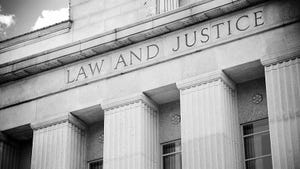Supply chain operations are critical to examine when reviewing a natural product brand’s corporate social responsibility (CSR).

Sustainability from a natural products corporation comes from many operations; however, the department that will be tasked in implement the policy, whatever that form may be, will be supply chain. Therefore, the supply chain professional running the program will have to wear many hats in order to accomplish this task.
From a supply chain standpoint, the initial reaction to implementing a sustainability program would be the impact on cost. Other impacts could be potential changes to the supply bases, quality, availability and continuity of supply. In addition, the company will need a coherent sustainability mission statement to implement the program.
Supply chain professionals have multiple touch points in any organization; they need to be able to engage and influence other departments in an effective manner. It is critical to understand the company mission statement regarding sustainability, and there is alignment across the organization from marketing, finance, production and logistics. In some cases, supply chain may have to help sell the idea.
Sustainability and corporate social responsibility
Sustainability must first be adequately defined before a program can be implemented. The United Nations’ World Commission on Environment and Development in 2008 defined sustainability as “development that meets the needs of the present without compromising the ability of future generations to meet their own needs”.
From here, we can tether sustainability to corporate social responsibility (CSR). CSR is not as universally adopted. It could a different concept for each organization despite the increasing pressure for the need to do so.
One model of CSR includes the following: (Acad. Manag. 1974;4(4): 497-505.)
The economic responsibility to generate profits
The legal responsibility to comply by local, state, federal and relevant international laws
The ethical responsibility to meet other social expectations, not written as law (e.g., avoiding harm or social injury, respecting moral rights of individuals, doing what is right, just, fair)
The discretionary responsibility to meet additional behaviors and activities that society finds desirable (e.g., philanthropic initiatives such as contributing money to various kinds of social or cultural enterprises).
Triple bottom line
One of the best ways to approach sustainability and CSR, from a high level, is the triple bottom line: people, planet and profit. The triple bottom line “focuses corporations not just on the economic value they add, but also on the environmental and social value they add—and destroy,” outlined Frank Vanclay, professor and head of the Department of Cultural Geography at the University of Groningen in the Netherlands, in the essay “Impact Assessment and The Triple Bottom Line: Competing Pathways To Sustainability?” “At its narrowest, the term ‘triple bottom line’ is used as a framework for measuring and reporting corporate performance against economic, social and environmental parameters.”
“At its broadest, the term [triple bottom line] is used to capture the whole set of values, issues and processes that companies must address in order to minimize any harm resulting from their activities and to create economic, social and environmental value,” Vanclay continued. “This involves being clear about the company’s purpose and taking into consideration the needs of all the company’s stakeholders—shareholders, customers, employees, business partners, governments, local communities and the public.”
Total cost of ownership is the best cost application approach. Simply focusing on the higher cost of compostable packaging is not the correct approach. The added benefits of shifting from a glass or plastic bottle to a pouch can result in freight savings and result in a lower carbon footprint, reduced warehousing costs and reduce packaging requirements for an e-commerce platform (elimination of pulp shipper). While the overall cost could be higher, the benefit to the planet and people would be considering in the triple bottom line approach.
Resilience
Another point is resilience. “Resilience is both a function of both the vulnerability of a system and its adaptive capacity,” according to the report “Resilience, Vulnerability, and Adaptive Capacity: Implications for System Performance” presented at the International Forum for Engineering Decision Making in 2004. Four major system characteristics contribute to resilience:
Diversity—the existence of multiple forms and behaviors
Efficiency—performance with modest resource consumption
Adaptability—flexibility to change in response to new pressures
Cohesion—existence of unifying relationships and linkages between system variables and elements
When implementing a sustainability program, an organization should have these resilience constraints and outline how the supply chain professional effectively addresses them. Again, this goes back the many hats supply chain wears and the influence it has on other parts of the organization. Marketing is looking for an angle to better position the brand with the consumer, finance is looking for lower costs, production is looking for consistency and quality. All these issues have to be addressed in order to be successful.
Hear McNamara speak more about sustainability at the SupplySide West Workshop: “Sustainable, Safe and Sanctioned Packaging for CPG Brands” on Friday, Oct. 18 at 9 to 11 a.m. Listen to him discuss sustainable packaging in the Healthy Insider podcast “Nutiva’s compostable and sustainable packaging initiative.”
Derek McNamara is the senior purchasing manager at Nutiva overseeing commodities, ingredients and packaging. Prior to that McNamara was employed at Jack in the Box and Safeway in purchasing roles for ingredients and commodities.
Professor Jose Munoz-Gonzalez at University of San Diego helped provide content for this article.
About the Author(s)
You May Also Like






.png?width=800&auto=webp&quality=80&disable=upscale)